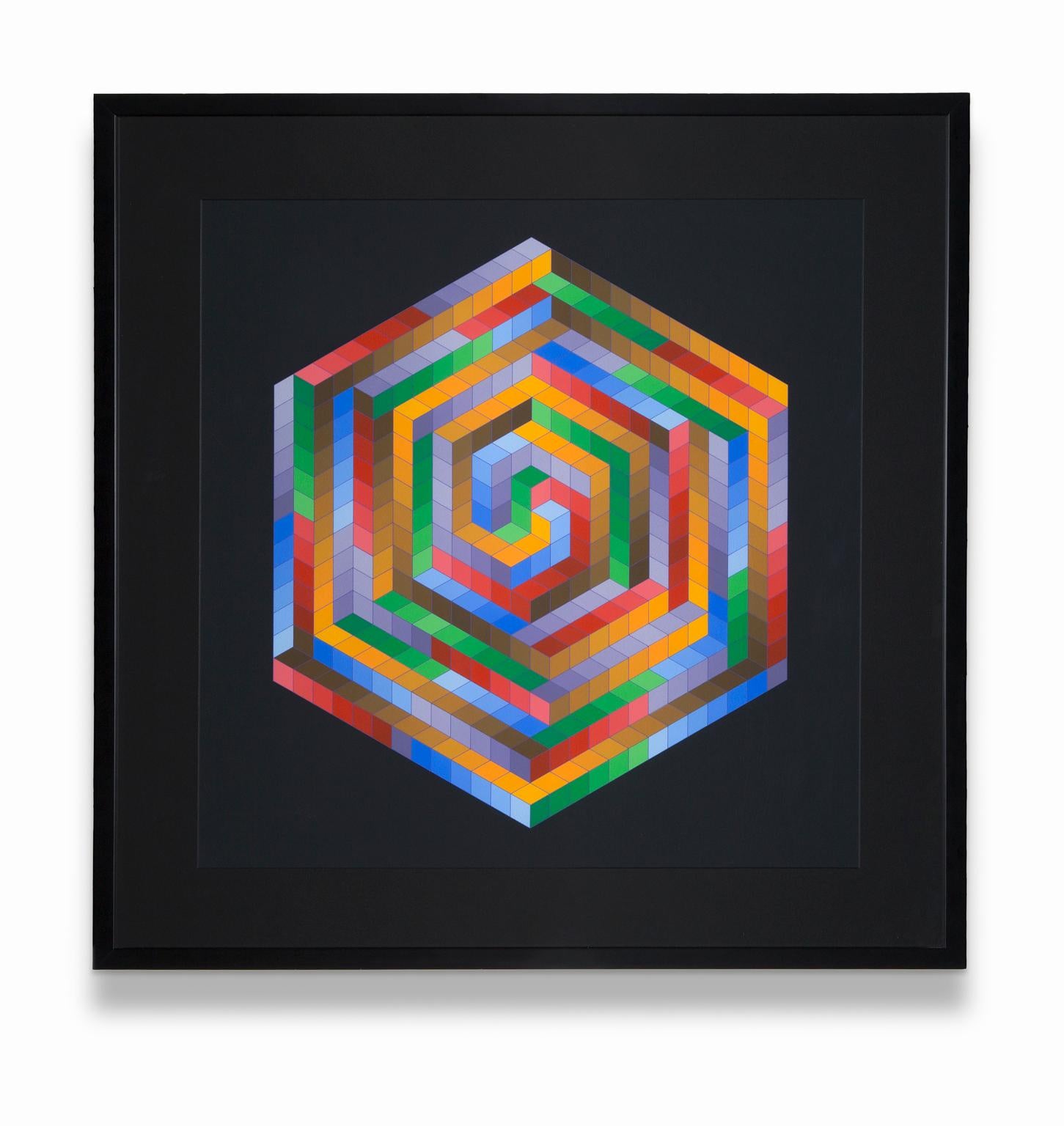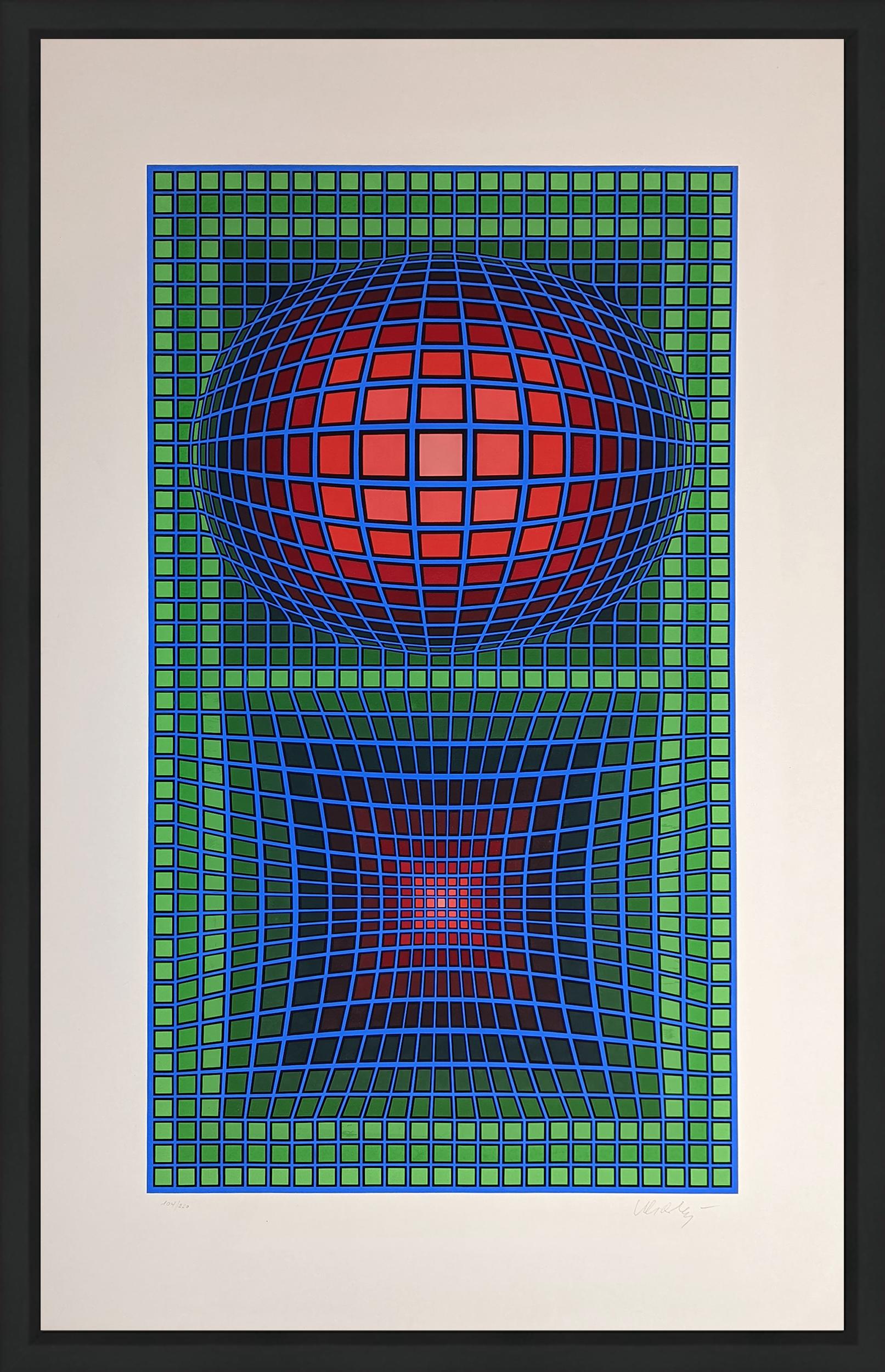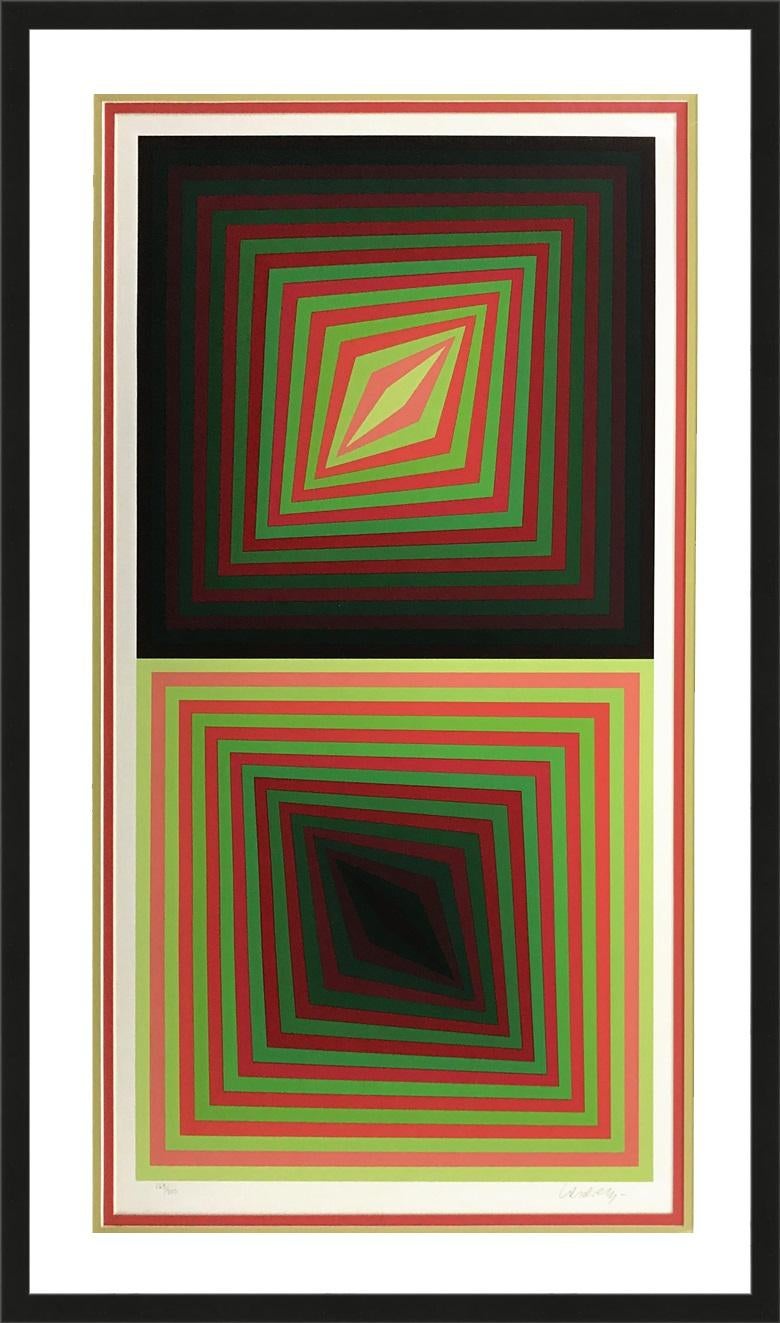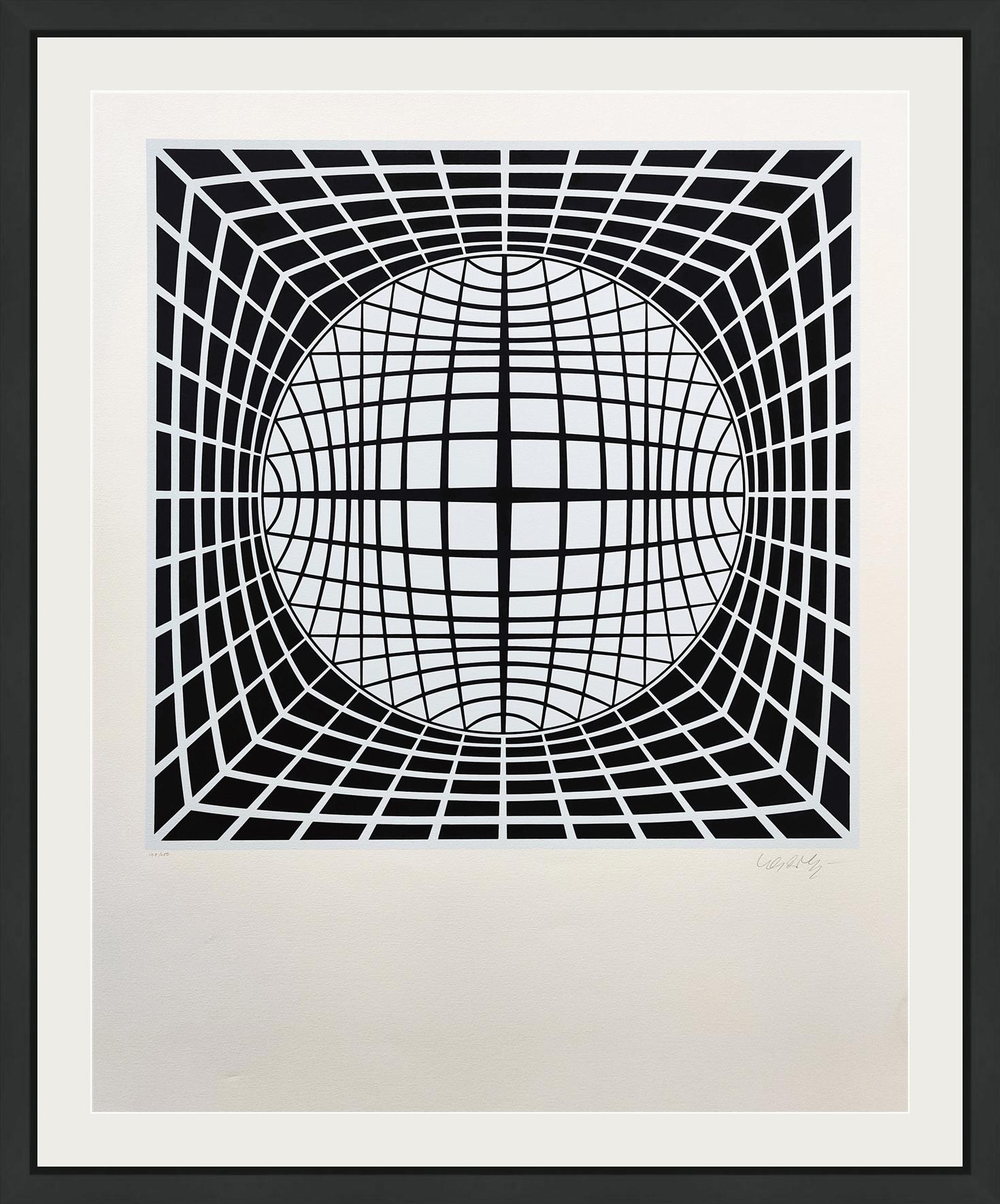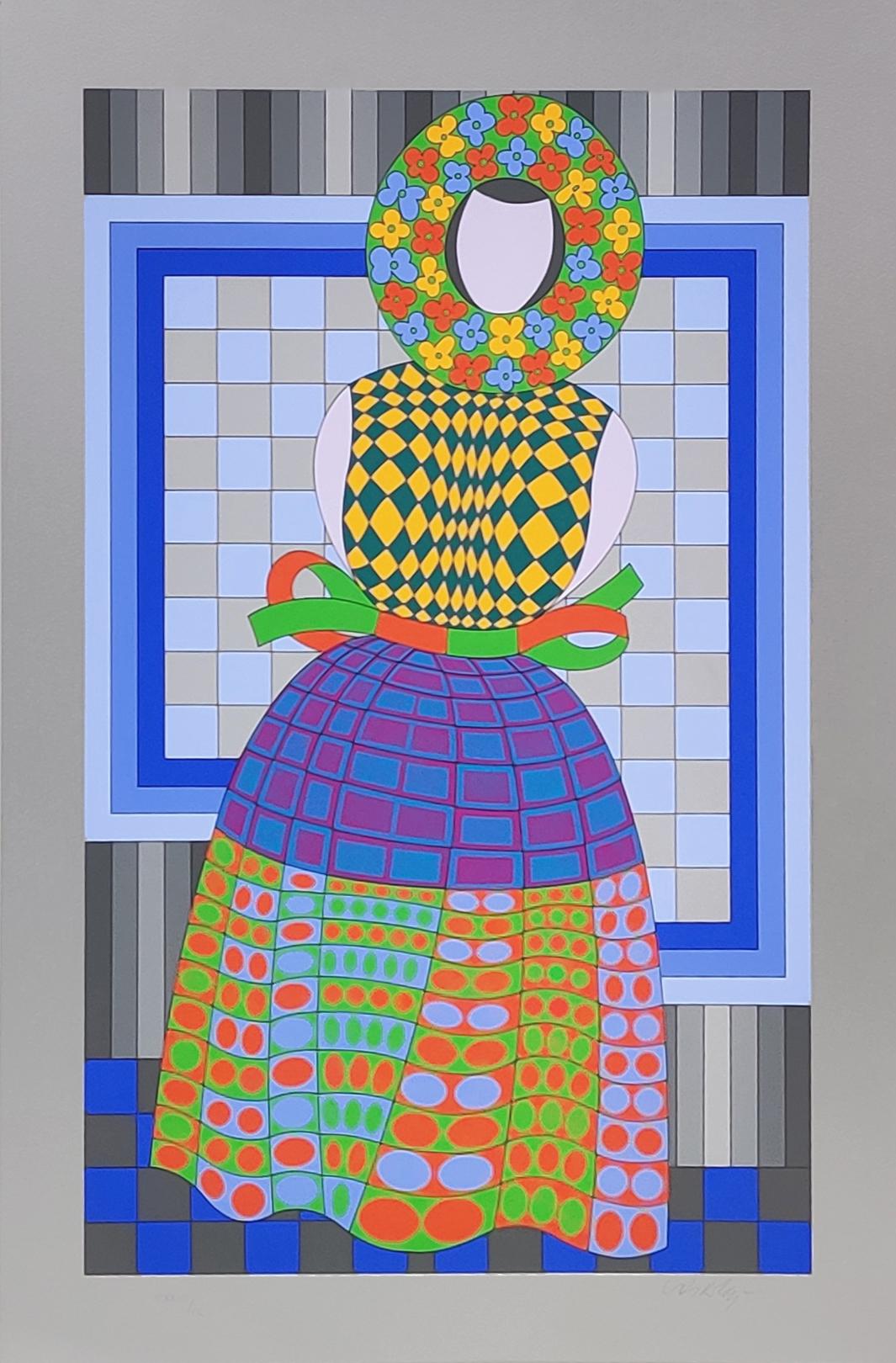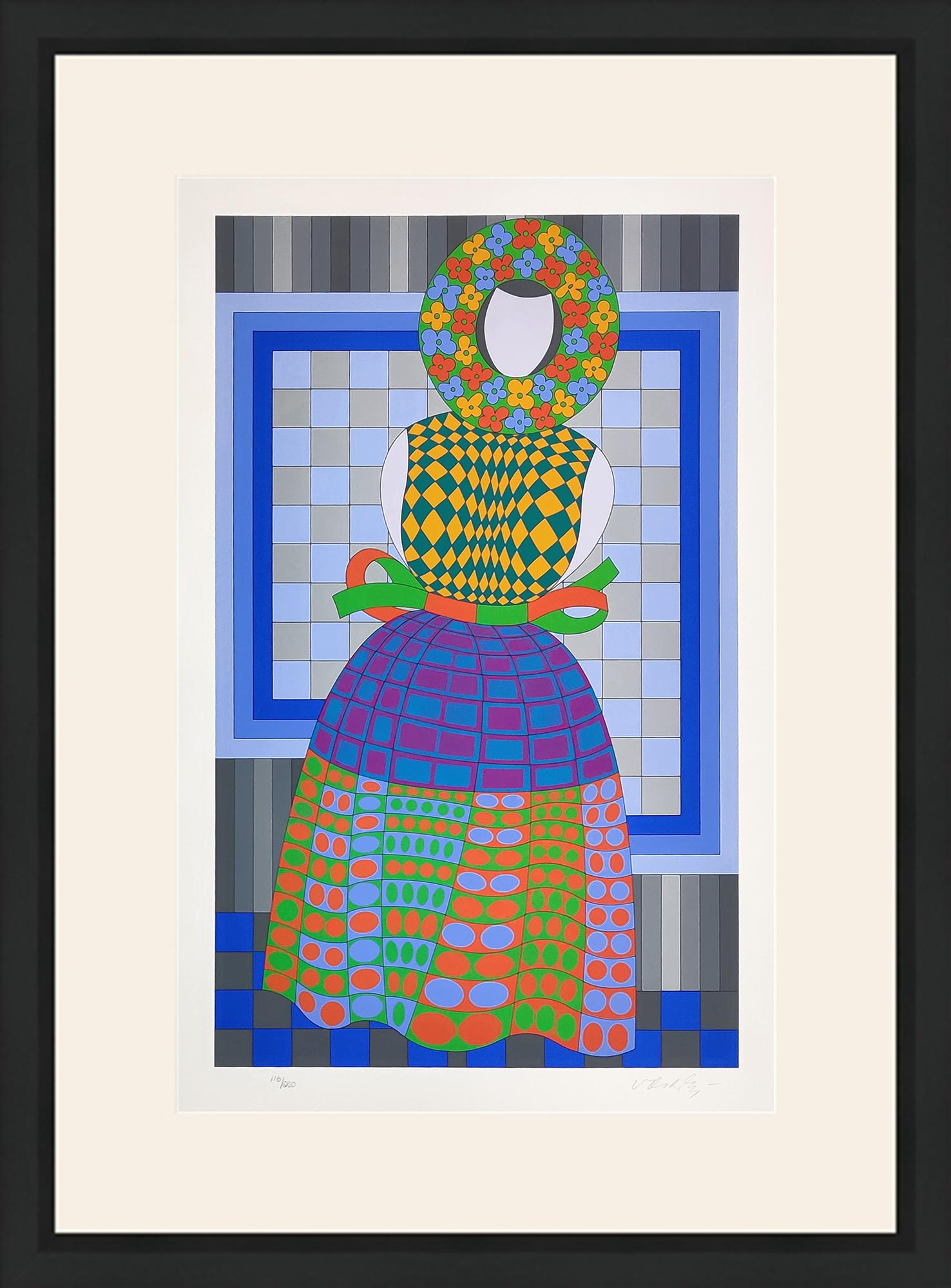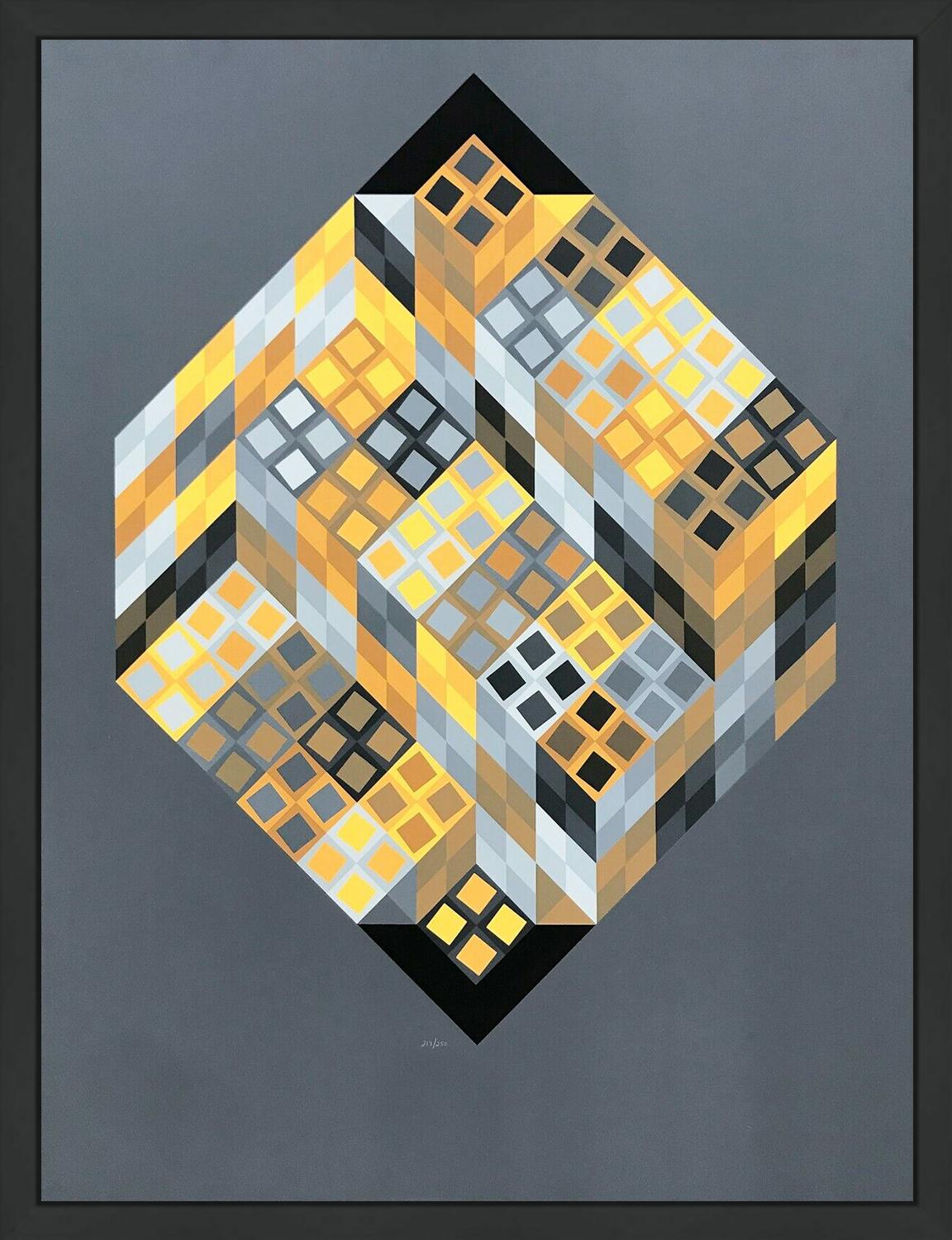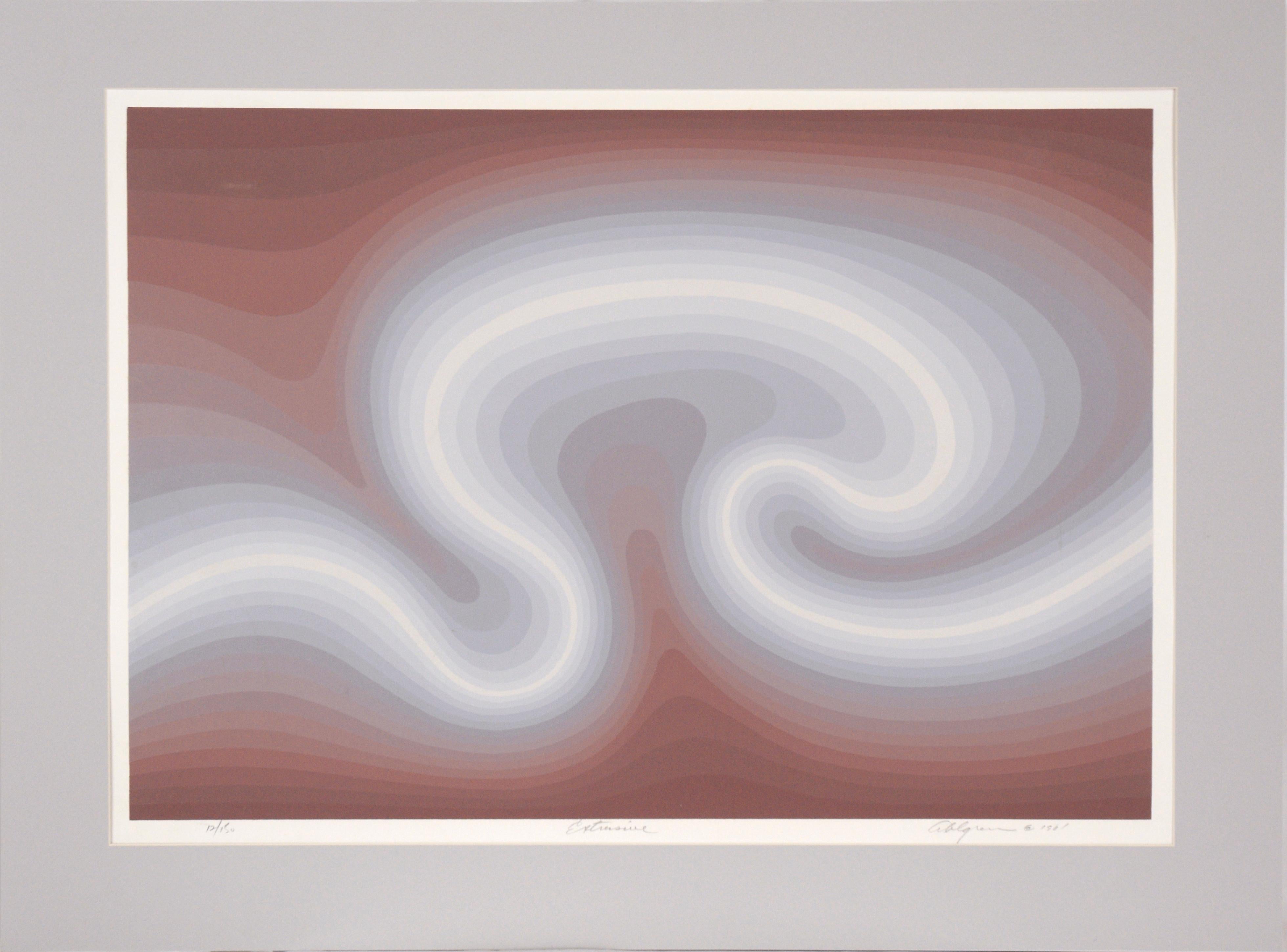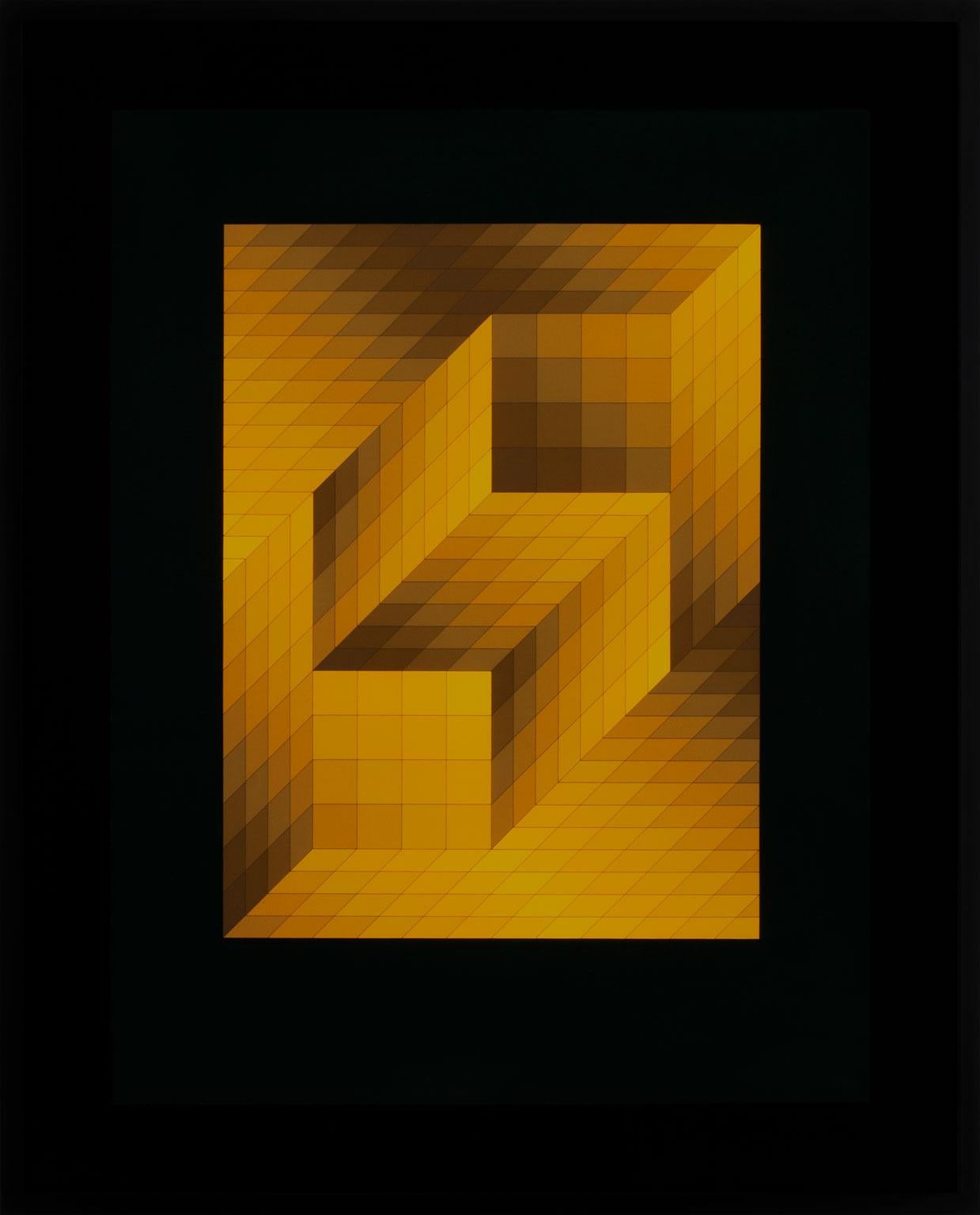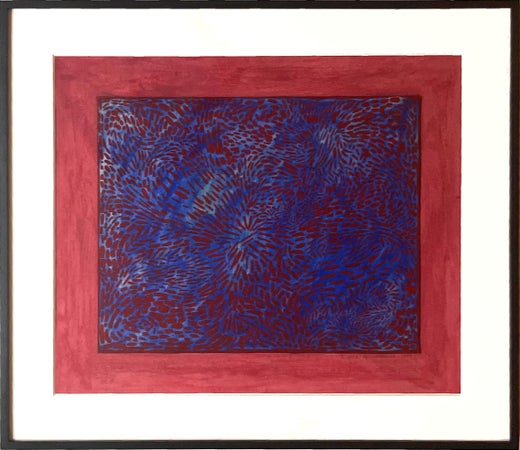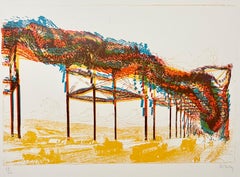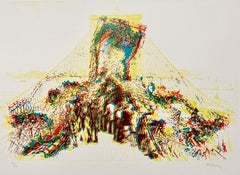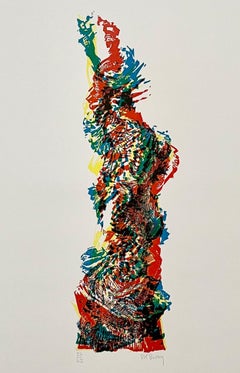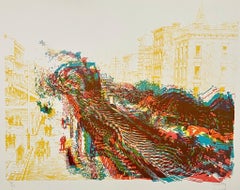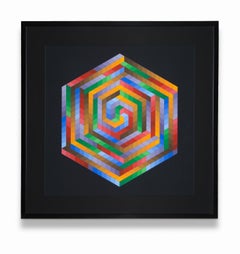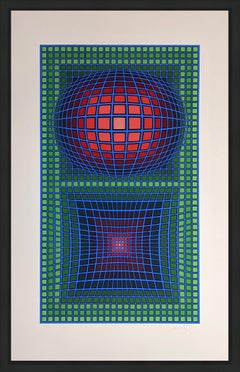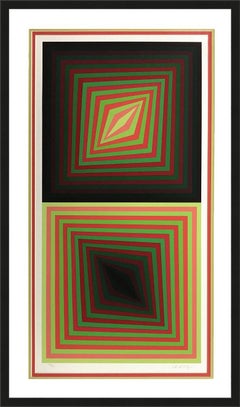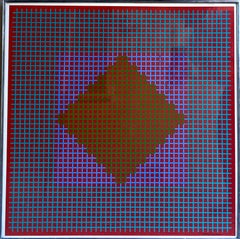
Hand Signed Op Art Kinetic Print Geometric Abstract Silkscreen Serigraph Pop Art
View Similar Items
Richard AnuszkiewiczHand Signed Op Art Kinetic Print Geometric Abstract Silkscreen Serigraph Pop Art1965
1965
About the Item
- Creator:Richard Anuszkiewicz (1930, American)
- Creation Year:1965
- Dimensions:Height: 24.5 in (62.23 cm)Width: 24.5 in (62.23 cm)
- Medium:
- Movement & Style:
- Period:
- Condition:minor wear. in original period frame. measurements include frame. frame has wear. please see photos.
- Gallery Location:Surfside, FL
- Reference Number:1stDibs: LU3825014572
Richard Anuszkiewicz
“I’m interested,” Richard Anuszkiewicz (1930–2020) once said, “in making something romantic out of a very, very mechanistic geometry.” Anuszkiewicz sought to achieve this romance through works juxtaposing vibrant colors in geometric configurations. The perceptual effects he created helped define the American Op art movement.
Anuszkiewicz studied color theory at Yale under Josef Albers and was greatly influenced by Albers’s approach. “The image in my work has always been determined by what I wanted the color to do,” Anuszkiewicz explained in a 1974 catalogue. “Color function becomes my subject matter, and its performance is my painting.”
He departed from his mentor, however, in the pulsating, illusory qualities he gave his work. One of his most famous paintings, Deep Magenta Square (1978), although similar in composition to Albers’s “Homage to the Square” series, is distinctly Op art in the way the striations surrounding the central square seem to vibrate and jump off the canvas.
Anuszkiewicz spent his entire career exploring optical effects through the manipulation of line and color, producing spectacular and timeless pieces of art. “Working with basic ideas will always be exciting,” he said in 1977. “And if a color or form is visually exciting in any profound sense, it will be that way in 10 or 20 years from now.”
Browse a variety of paintings and prints by Richard Anuszkiewicz at 1stDibs.
More From This Seller
View All1960s Op Art Landscape Prints
Lithograph, Screen
1960s Op Art Landscape Prints
Lithograph, Screen
1960s Op Art Landscape Prints
Lithograph, Screen
1960s Op Art Landscape Prints
Lithograph, Screen
1960s Op Art Landscape Prints
Lithograph, Screen
20th Century Op Art Abstract Prints
Screen
You May Also Like
Mid-20th Century Op Art Abstract Prints
Paper, Screen
1960s Op Art Abstract Prints
Handmade Paper, Screen
1980s Op Art Abstract Prints
Paper, Screen
1970s Op Art Abstract Prints
Paper, Screen
Late 20th Century Op Art Abstract Prints
Paper, Screen
1980s Op Art Abstract Prints
Paper, Screen
